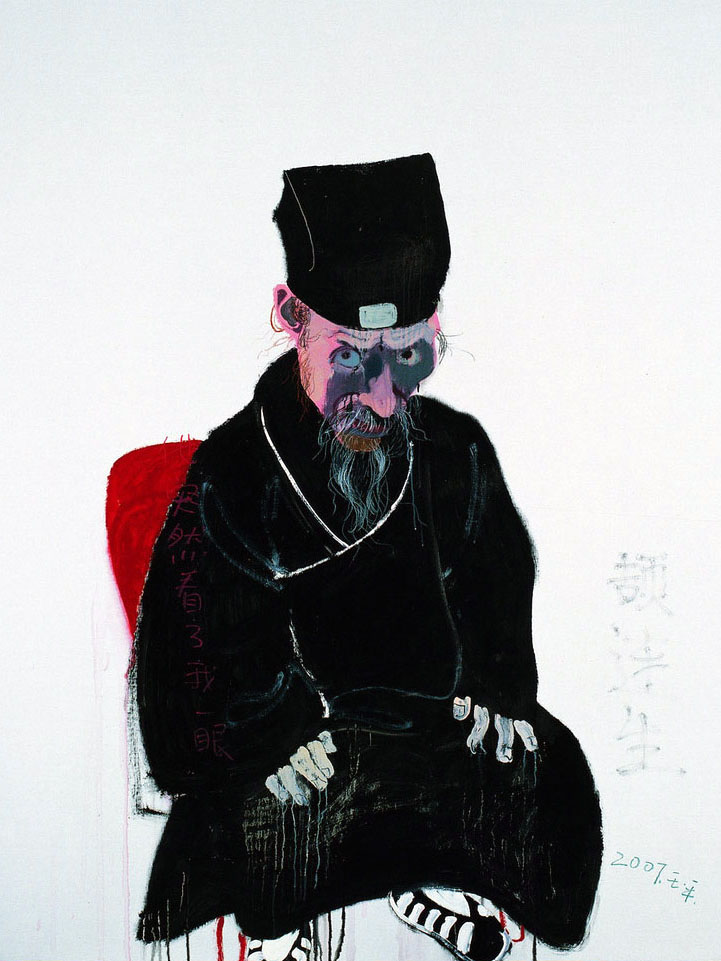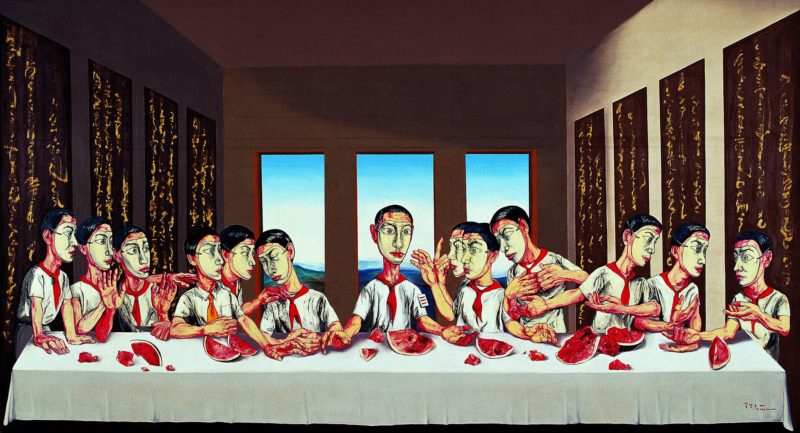
Privately owned
The painting was sold at auction in 2013 to an anonymous private collector. Its current location and display status are not publicly known.
Background
Zeng Fanzhi’s 1 The Last Supper is one of the most noteworthy Asian contemporary pieces of art. Throughout his career, Zeng Fanzhi has been working to make Chinese art 2 more popular. His artwork is known for offering an honest critique of the contemporary Chinese lifestyle while creating a much-needed dialogue between Eastern and Western philosophies.
His most vital contribution to China’s contemporary art scene has been his critique of communist-era Chinese propaganda. His works are well known for criticizing the restrictive controls brought about by the government on local artists and creators.
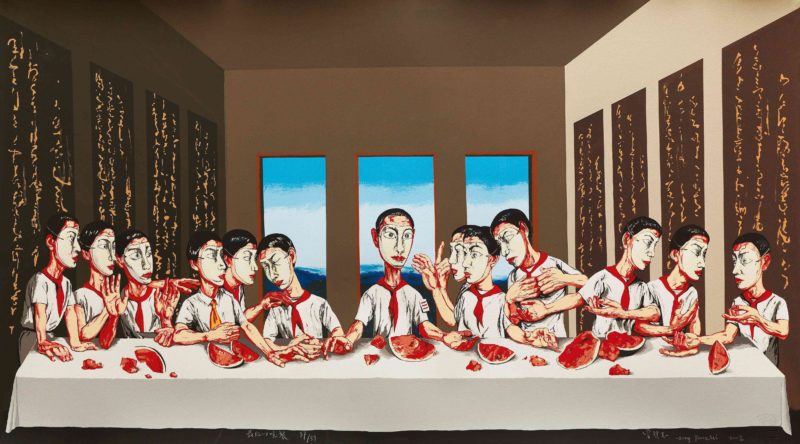
Before artists such as Zeng Fanzhi stepped up to bring to light important artist issues in China, artists were only permitted to produce works based on Socialist Realism 3, which is a philosophy that only allowed painters to produce figurative paintings that featured idealized political leaders and happy and content citizens, which was not the case in real life.
Inspiration
As a contemporary Chinese painter, Zeng Fanzhi has played an instrumental role in highlighting various significant issues in Chinese society. Known primarily for his expressionist and psychologically analytical and inquisitive portraits, Zeng Fanzhi depicts his human subjects using vivid, lively brushwork that can sometimes be confused with abstraction.
He is known for portraying his subjects through dense branches and crowding and complicating the canvas using a series of chaotic and stylized techniques that add a sense of disorder and confusion.
Zeng emerged on the art scene in China during the early 1990s thanks to his fleshy expressionist paintings. His work during the beginning of his career would lay down the foundation for the growth of his career, but it was Mask Series 1996 No. 6, created in 1996, that helped propel the artist to stardom.
In 2008, this very piece broke the record for a modern Asian artist at auction, managing to sell for a notable $9.7 million at Christie’s.
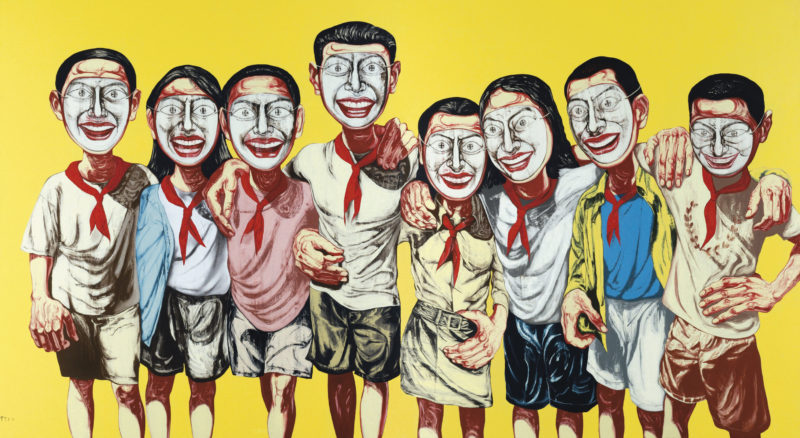
Zeng Fanzhi & Tiananmen
Having witnessed and survived the Cultural Revolution in China, Zeng’s work mainly focuses on his experiences during the period of revolution.
He is known for disapprovingly exploring the speedily shifting and fluctuating face of modern Chinese culture and society, as evidenced through his remarkable painting Tiananmen of Mao 5 created in 2004, referencing, of course, the world-famous Tiananmen Square 67.
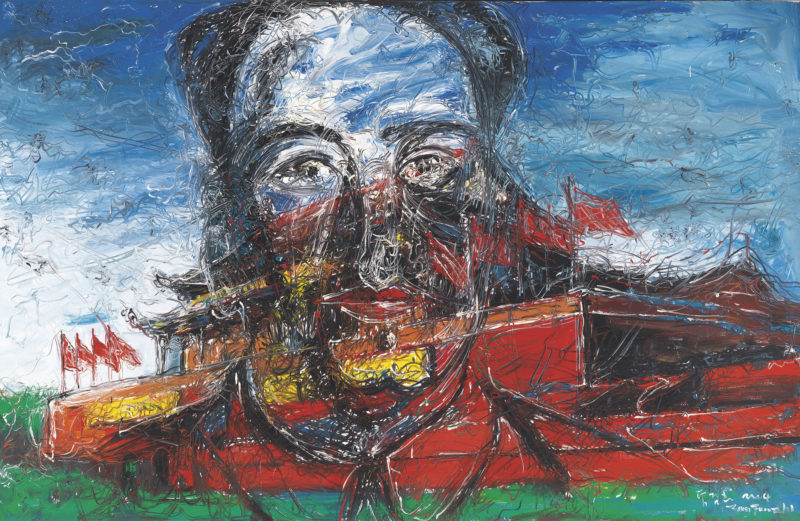
The Last Supper, 2001
The 2001 piece was created as a recreation or regeneration of The Last Supper that was initially created by Italian legend Leonardo Da Vinci 8, in which the last meal between Jesus and the 12 was depicted. It is at this last supper that Jesus also foretold Judas’ impending betrayal that would lead to his crucifixion.
In Zeng’s piece, however, the religious figures were replaced by young communists wearing white shirts and visible red neckties. The figure depicting Judas was adorned in a western-styled yellow tie, which symbolized China’s growth towards a capitalist economy. Instead of dining on bread during the last supper, Zeng Fanzhi’s 12 masked pioneers were displayed consuming watermelon.
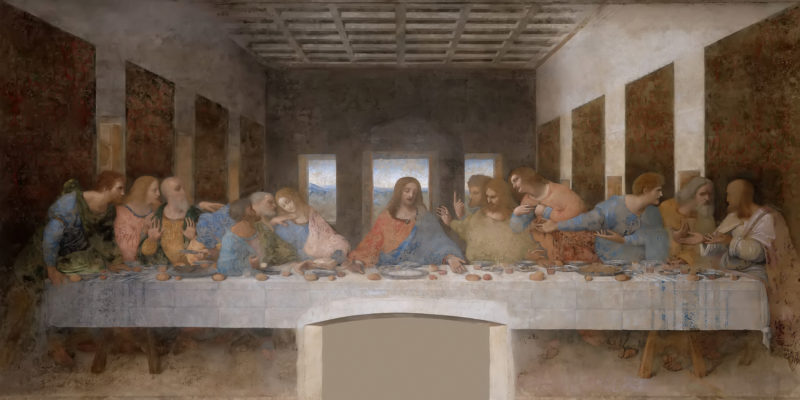
Meaning & Analysis
Zeng Fanzhi’s The Last Supper was designed to present the artist’s own fusion of identities influenced by Western and Eastern cultures. With just a single painting, Zeng challenged both Westernization and Chinese practices concurrently, therefore successfully managing to present multifaceted interpretations of international relations today.
Most of the sitters were depicted wearing red scarves, a symbol of communism, while Judas’s yellow scarf represented western capitalism. Rather than eat bread, the subjects of the painting consumed watermelon to evoke an era when the artist himself was broke and could only manage to feed himself with easily accessible fruits such as watermelons.
The work alluded to the initial signs of western influence in the Chinese economy. This western influence would grow over the years to completely transform the nation through the later 1980s and early 1990s. At this time, the Chinese economy underwent a liberalization period that saw the collectivist ideals of many businesses pushed aside in favor of individual entrepreneurship.
As such, Zeng Fanzhi’s The Last Supper borrowed on the iconography of the original Last Supper painting as a means of criticizing the growth of capitalism and the Communist Party’s disloyalty of Chinese norms and traditional society. Zeng Fanzhi’s The Last Supper played an instrumental role in documenting Western and Chinese relations during the 1990s.
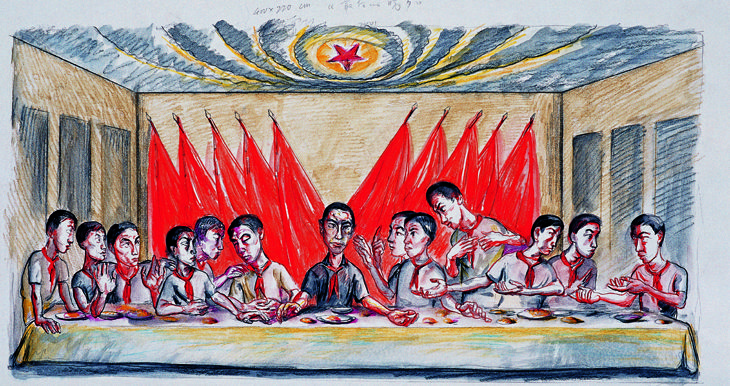
Auction
Zeng Fanzhi’s The Last Supper recorded an outstanding auction record for Asian contemporary art when it sold for $23.3 million. An anonymous private collector bought the 4-meter wide painting at an evening auction that saw the bidding proceedings start at $9 million.
The Last Supper broke the previous 2008 record for a piece created by an Asian contemporary artist. The previous record was held by contemporary Japanese artist Takashi Murakami 10, and at the time, it sold for $15 million. The auction of the 4-meter wide painting was hosted by well-known auction powerhouse Sotheby’s on October 5, 2013, in Hong Kong.
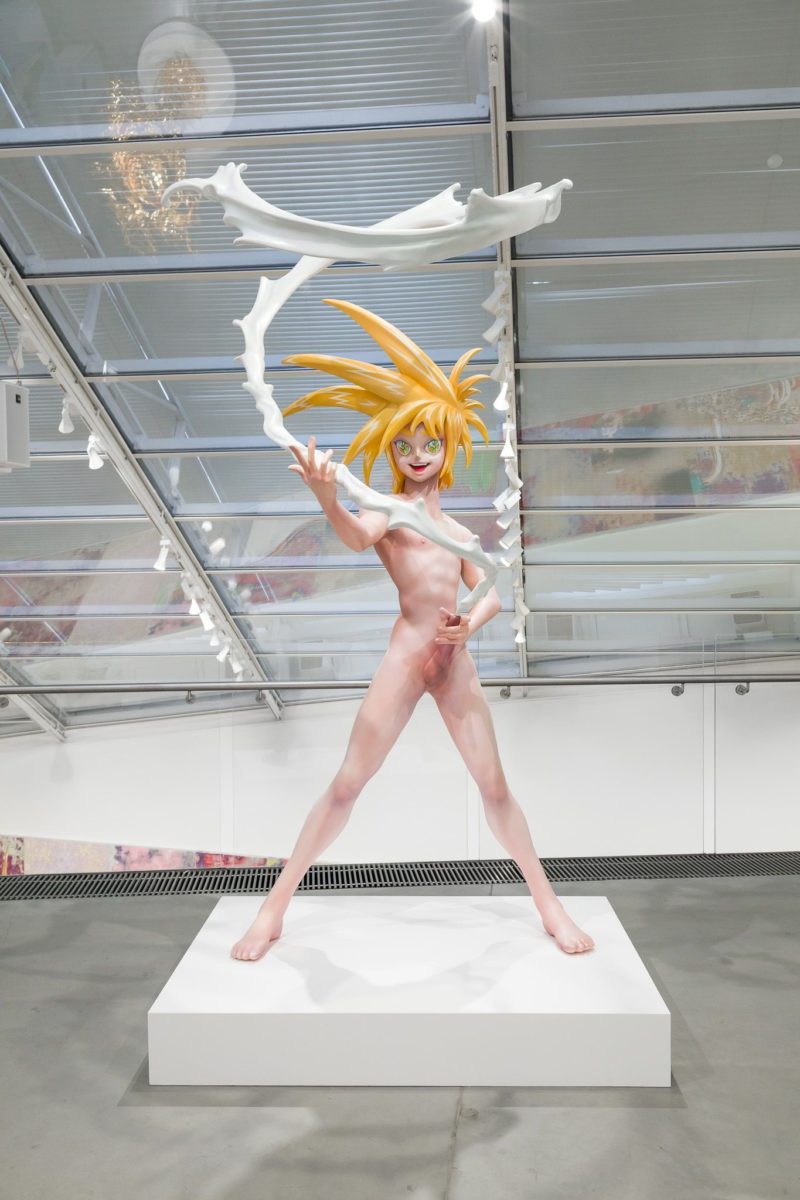
Zeng Fanzhi explains the theory & thought behind his work
9min 5sec
